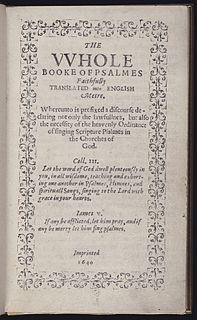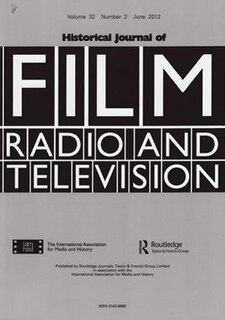 W
WThe history of American newspapers begins in the early 18th century with the publication of the first colonial newspapers. American newspapers began as modest affairs—a sideline for printers. They became a political force in the campaign for American independence. Following independence the first amendment to U.S. Constitution guaranteed freedom of the press. The U.S. Postal Service Act of 1792 provided substantial subsidies: Newspapers were delivered up to 100 miles for a penny and beyond for 1.5 cents, when first class postage ranged from six cents to a quarter.
 W
WThe Bay Psalm Book is a metrical psalter first printed in 1640 in Cambridge, Massachusetts. It was the first book printed in British North America. The psalms in it are metrical translations into English. The translations are not particularly polished, and none has remained in use, although some of the tunes to which they were sung have survived. However, its production, just 20 years after the Pilgrims' arrival at Plymouth, Massachusetts, represents a considerable achievement. It went through several editions and remained in use for well over a century.
 W
WThe Historical Journal of Film, Radio and Television is an academic journal dedicated to the study of media history. It is published quarterly by Routledge on behalf of the International Association for Media and History. The current editor-in-chief is James Chapman.
 W
WMusic publishing is the business of creating, producing and distributing printed musical scores, parts, and books in various types of music notation, while ensuring that the composer, songwriter and other creators receive credit and royalties or other payment. This article outlines the early history of the industry.
 W
WPropaganda is information that is not impartial and used primarily to influence an audience and further an agenda, often by presenting facts selectively to encourage a particular synthesis, or using loaded messages to produce an emotional rather than a rational response to the information presented. The term propaganda has acquired a strongly negative connotation by association with its most manipulative and jingoistic examples.
 W
WMedia during the Turkish War of Independence refers to the political attitudes of newspapers and magazines that were published in Anatolia and Constantinople during the Turkish War of Independence between the Armistice of Mudros (1919) and the Treaty of Lausanne (1923).
 W
WA magazine is a periodical publication which is printed in gloss-coated and matte paper. Magazines are generally published on a regular schedule and contain a variety of content. They are generally financed by advertising, by a purchase price, by prepaid subscriptions, or by a combination of the three.
 W
WThe modern newspaper is a European invention. The oldest direct handwritten news sheets that circulated widely in Venice as early as 1566. These weekly news sheets were filled with information on wars and politics in Italy and Europe. The first printed newspapers were published weekly in Germany from 1609. Typically they were heavily censored by the government and reported only foreign news, and current prices. After the English government relaxed censorship in 1695, newspapers flourished in London and a few other cities including Boston and Philadelphia. By the 1830s high speed presses could print thousands of papers cheaply, allowing for low daily costs.
 W
WThe history of sound recording - which has progressed in waves, driven by the invention and commercial introduction of new technologies — can be roughly divided into four main periods:The Acoustic era (1877–1925) The Electrical era (1925–1945) The Magnetic era (1945–1975) The Digital era (1975–present).
 W
WThe Structural Transformation of the Public Sphere: An Inquiry into a Category of Bourgeois Society is a 1962 book by the philosopher Jürgen Habermas. It was translated into English in 1989 by Thomas Burger and Frederick Lawrence. An important contribution to modern understanding of democracy, it is notable for "transforming media studies into a hard-headed discipline."